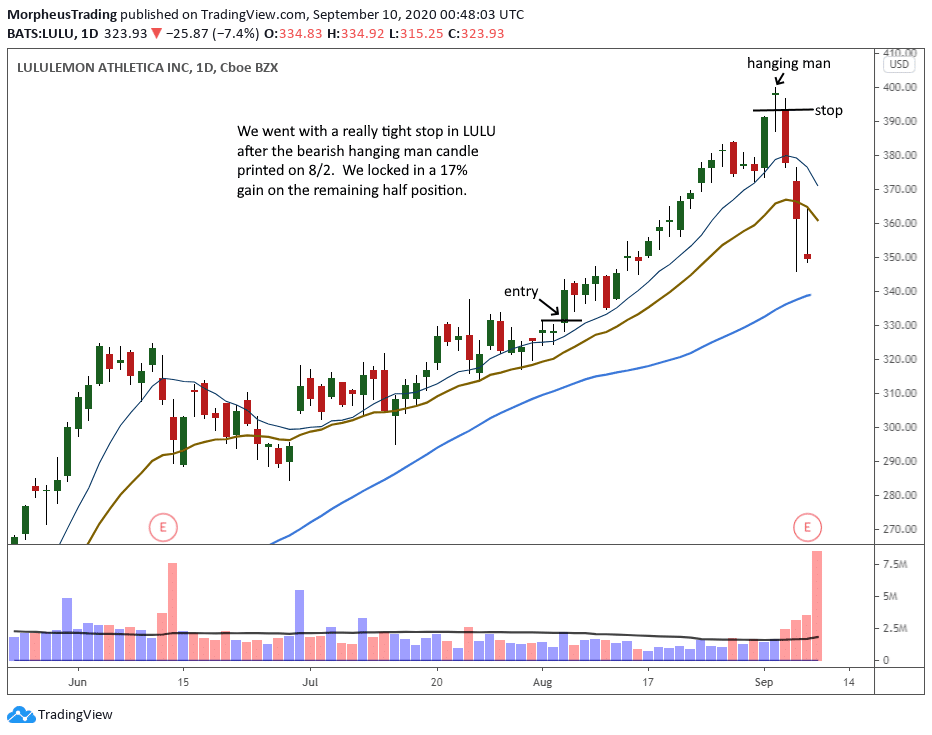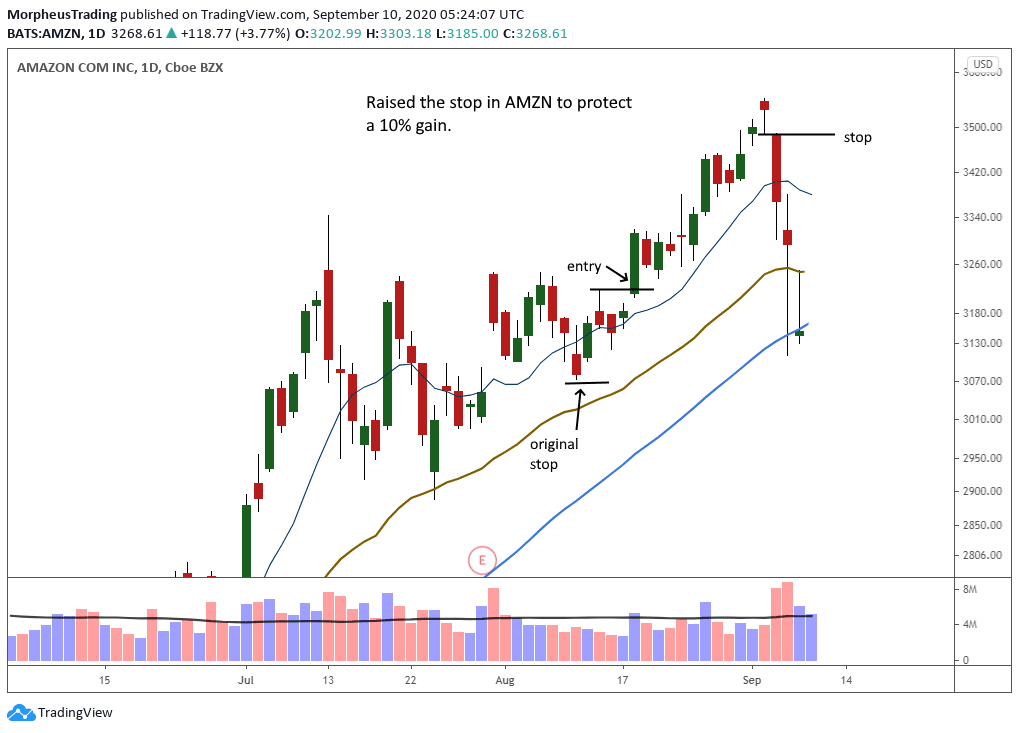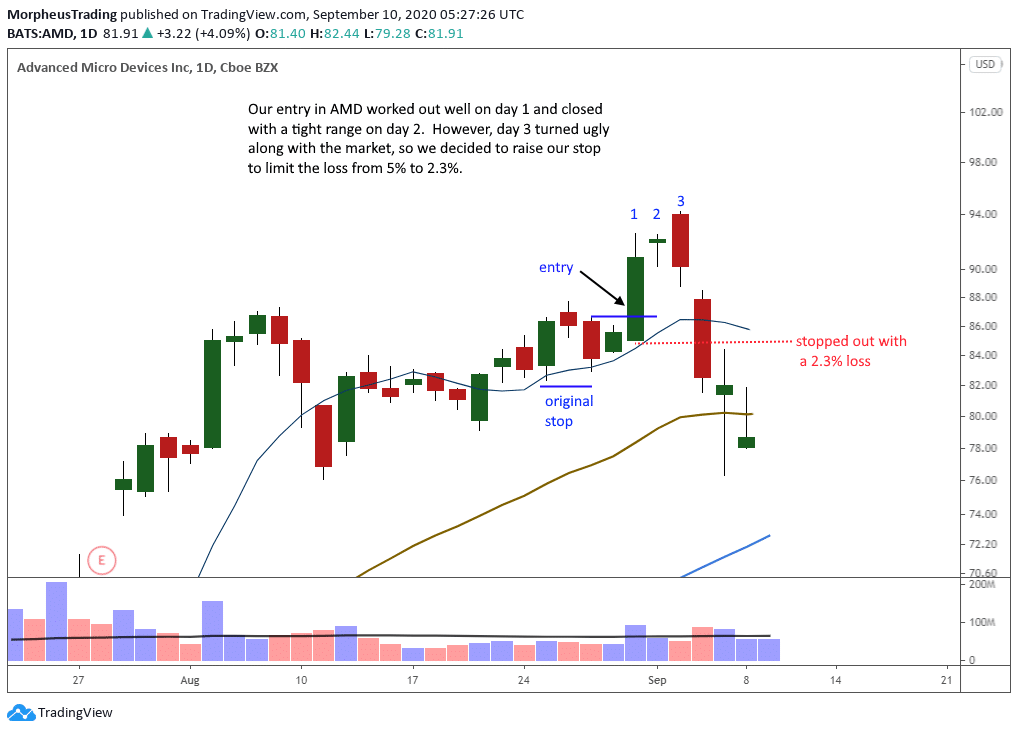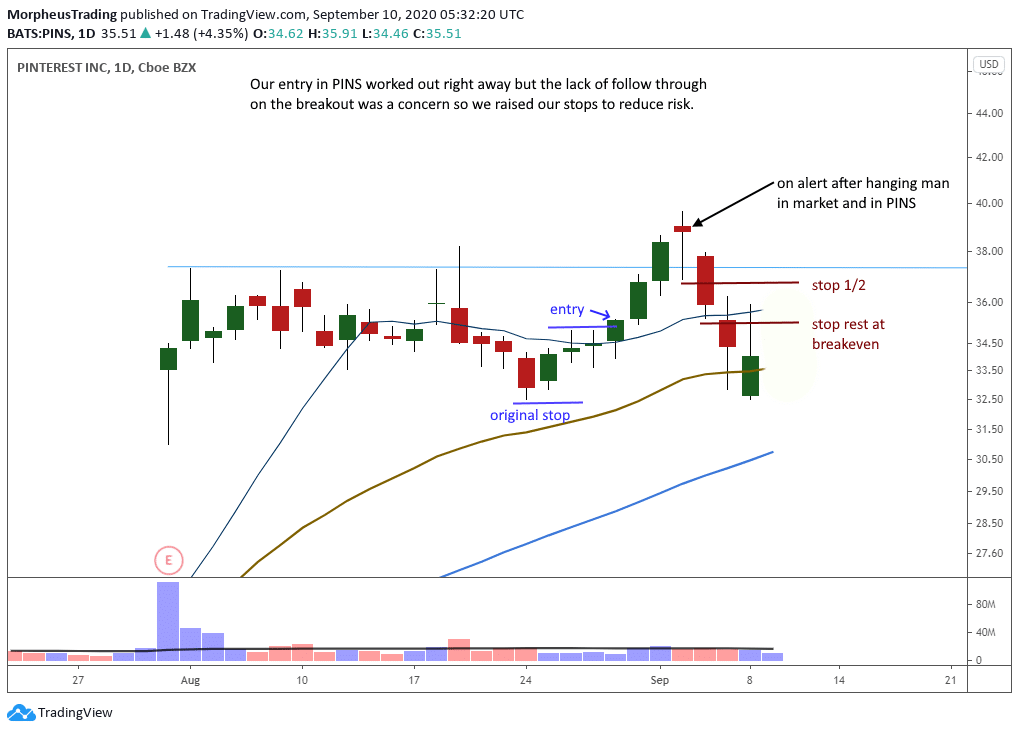
As stocks began plunging sharply last week, our rule-based market timing system enabled us to quickly lock in gains and minimize losses when the current correction began. Here’s a look at how we did it and the end result of our positions.
In a raging bull market like we’ve seen over the past few months, it can be easy to forget that all stocks eventually go down as well.
But knowing when to protect profits and play defense is one of the most critical and challenging aspects of trading.
Since stocks typically fall much faster than they rise, complacency during market corrections is a sure-fire way to blow up your trading account.
Rather, successful traders proactively take control with precision position management when the going gets tough.
Continue reading to discover a simple way to protect your profits during sudden market reversals, as well as a key warning signal that will often guide you.
Letting profits ride vs. playing defense
Knowing when to let the profits ride versus when to play defense is a life-long pursuit for every trader–regardless of one’s experience level and profitability.
Selling too early can severely limit your profits, but not selling quickly enough when sentiment turns negative is even more damaging.
Many factors typically go into our decision making process of determining when to sell a stock.
Sometimes it is just the price action of the stock itself, but sometimes stocks are just too extended overall–making the broad market vulnerable to a sharp sell-off.
The latter was the case over the past week.
Hanging Man: A crucial NASDAQ warning sign
After closing higher in nine of the ten preceding days, the benchmark S&P 500 Index formed a bearish “hanging man” candlestick pattern on September 2.
Combined with many leading stocks making parabolic moves, the hanging man formation immediately put us on high alert for a potential sell-off the next day.
After a steady run of big gains in our newsletter’s model portfolio, we knew it was time to immediately tighten stops in our open positions and (at least temporarily) avoid new buy setups.
Below is the exact commentary and chart we shared with subscribers in the September 3 issue of The Wagner Daily report:
“Nasdaq 100 ETF ($QQQ) closed with a bearish hanging man candle on Wednesday, which is a bearish signal that should be confirmed by lower closing action the following day.
“There are no new setups for Thursday. Given the steep run-up in $QQQ and the hanging man reversal candle, we’ve decided to tighten up stops on all open positions. All stops are in, so it’s up to the market to decide what is next for our portfolio:”

The Scorecard
Lululemon ($LULU)
+17.8% gain
We were showing an unrealized gain of nearly +20% in $LULU (remaining half position) when it closed with a bearish, hanging man candlestick on September 2.
We decided to go with a really tight stop, enabling us to lock in a gain of +17.8% with an exit at $393.22.
Just four days later, $LULU is currently trading approximately 17% below our exit point:

Amazon ($AMZN)
+8.2% gain
$AMZN was showing an unrealized gain of roughly +10% since our August 12 buy entry.
We tightened the stop to just below the September 2 low, enabling us to secure a gain of +8.2% when our stop was hit:

Advanced Micro Devices ($AMD)
-2.3% loss
Not all our open positions in The Wagner Daily were clear winners.
Some trades, like $AMD, were just beginning to work out when the NASDAQ flashed its hanging man warning sign.
We would have been out of $AMD with a 5% loss if we had stuck with our original stop price.
However, we raised the stop to just below the low of the August 31 breakout day and limited our risk to a loss of 2.3%.
We could have set a tighter stop, but we wanted to give $AMD some room in case it showed relative strength during a potential pullback:

Pinterest ($PINS)
+1.8% gain
Like $AMD, our $PINS trade was just beginning to move higher as well.
The price and volume action on September 1 was constructive, but our focus turned to playing defense after a hanging man formed at the highs on September 2.
We set our stop for half the position out beneath the September 2 low, with the second half set at break-even (just below support of the 10-day moving average).
After both stops triggered, we still netted a small gain of +1.8% on the $PINS trade:

It’s important to note that tight stops are not always the answer–especially when the market is just breaking out from a base and leading stocks are not extended.
However, before the current correction began, the Nasdaq was already well extended above its 20 and 50-day moving averages before it flashed a hanging man warning signal.
When the market is extended and vulnerable to a sharp selloff, it’s best to tighten up stops in winners and in stocks where you haven’t made much progress.
Again, selling a winning stock is never easy and we sometimes get it wrong.
But given the multi-day plunge that followed, we are quite pleased with the way we managed the winning stock trades in our model swing trading portfolio.
With our timely exit out of all long positions the week of February 24 (the start of the coronavirus bear market), this marks the second time this year our market timing system neatly locked in gains and kept us out of trouble.
Choosing your battles: The most important success factor for traders
Picking the right stocks to buy is only one small element of being a consistently profitable trader.
Much more important is knowing exactly when to step on the gas pedal with aggressive buying, versus when to play defense and sit on the sidelines.
For now, we are laying low on the sidelines while waiting for the correction to find a bottom. But we will surely be ready for the next massive bull run when the time is right.
Sign up now for The Wagner Daily to be instantly alerted when it’s time to start profiting from buying leading growth stocks again.
